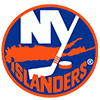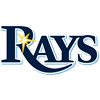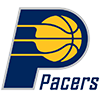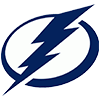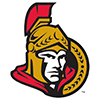Let's put talk of the ball, humidors, and sticky stuff aside, and focus on some batters hitting flyballs harder or softer than last season, as perhaps the best harbinger for power is flyball average exit velocity. The goal will be to decide if their present home run rate will increase, decrease or stay the same.
Batters With Increased Flyball Exit Velocity
Christian Walker, Arizona Diamondbacks
FB AEV | AVG FB Dist | FB% | HR/FB | HR% | |
|---|---|---|---|---|---|
2022 | 95.8 | 337.2 | 47.70% | 20.80% | 6.60% |
2021 | 90.3 | 314 | 38.70% | 8.70% | 2.20% |
There is nothing lucky about Walker's 15 homers. He's hitting more balls in the air, with more force. However, he's barely over the Mendoza line, so it appears he's selling out for power. Appearances can be deceiving though, and his numbers disagree. Walker's strikeout rate is 21 percent, well below his career level. Further, his BABIP on hard grounders is .173, about 50 points shy of league average and over 100 points lower than last season's level.
It remains to be seen whether Walker will continue to hit flyballs at the rate he posted over the first two months, but expecting something above his norm is reasonable. His average should climb as his groundball BABIP normalizes.
Targeting Walker in a trade should provide a boost in power. His low average could grease the skids for a deal.
Matt Chapman, Toronto Blue Jays
FB AEV | AVG FB Dist | FB% | HR/FB | HR% | |
|---|---|---|---|---|---|
2022 | 98.3 | 337.2 | 44.90% | 11.30% | 3.30% |
2021 | 92.8 | 317 | 51.80% | 15.50% |
Let's put talk of the ball, humidors, and sticky stuff aside, and focus on some batters hitting flyballs harder or softer than last season, as perhaps the best harbinger for power is flyball average exit velocity. The goal will be to decide if their present home run rate will increase, decrease or stay the same.
Batters With Increased Flyball Exit Velocity
Christian Walker, Arizona Diamondbacks
FB AEV | AVG FB Dist | FB% | HR/FB | HR% | |
|---|---|---|---|---|---|
2022 | 95.8 | 337.2 | 47.70% | 20.80% | 6.60% |
2021 | 90.3 | 314 | 38.70% | 8.70% | 2.20% |
There is nothing lucky about Walker's 15 homers. He's hitting more balls in the air, with more force. However, he's barely over the Mendoza line, so it appears he's selling out for power. Appearances can be deceiving though, and his numbers disagree. Walker's strikeout rate is 21 percent, well below his career level. Further, his BABIP on hard grounders is .173, about 50 points shy of league average and over 100 points lower than last season's level.
It remains to be seen whether Walker will continue to hit flyballs at the rate he posted over the first two months, but expecting something above his norm is reasonable. His average should climb as his groundball BABIP normalizes.
Targeting Walker in a trade should provide a boost in power. His low average could grease the skids for a deal.
Matt Chapman, Toronto Blue Jays
FB AEV | AVG FB Dist | FB% | HR/FB | HR% | |
|---|---|---|---|---|---|
2022 | 98.3 | 337.2 | 44.90% | 11.30% | 3.30% |
2021 | 92.8 | 317 | 51.80% | 15.50% | 4.30% |
That noise you hear is Chapman's numbers screaming "BUY LOW!"
How can a player hit the ball much harder and further, yet have their HR/FB rate drop? Even more befuddling is Chapman's offseason move from a power-suppressing venue in Oakland to the Rogers Centre, which embellishes pop.
Not only is Chapman hitting flyballs with more authority, his strikeout rate is a palatable 24 percent, down almost 10 points from the past two campaigns.
If Chapman maintains his current skills, he has a shot to threaten 30 homers, even though he only has seven so far.
Tommy Edman, St Louis Cardinals
FB AEV | AVG FB Dist | FB% | HR/FB | HR% | |
|---|---|---|---|---|---|
2022 | 92.5 | 323.8 | 30.30% | 9.40% | 2.00% |
2021 | 88 | 303.2 | 32.20% | 6.30% | 1.60% |
Edman is more known for his stolen base prowess than his power, but he's interesting to study since his trends are different than most. Usually, an increase in flyball exit velocity emanates from a change in swing path, as a batter adds an uppercut to their stroke to better match the trajectory of a pitch's downward movement. Edman's batted ball distribution and average launch angle is like last season; he's just hitting the ball harder in general. His bat speed is up, and so is his production. Edman is on pace for 15 homers, which would be a personal best. He may fall a dinger or two short, but he's in good shape to better the 11 he smacked last season and in 2019.
With 14 steals in 15 chances, acquiring Edman will be a chore. However, if you only pay for his steals, be confident he'll sustain much if not all of his added power.
Austin Riley, Atlanta Braves
FB AEV | AVG FB Dist | FB% | HR/FB | HR% | |
|---|---|---|---|---|---|
2022 | 98.2 | 344.5 | 36.80% | 26.30% | 6.00% |
2021 | 94.3 | 323 | 36.70% | 20.90% | 5.00% |
When a player enjoys a breakout like Riley did last season, it's natural to expect some regression. At least so far, he has surpassed last season's elevated skill level. He's earned every bit of his 15 homers and should handily eclipse last season's total of 33.
Last season, Riley hit a robust .303, but it was fueled by a bloated .347 BABIP on grounders. This season, he checks in at .254, a more reasonable level. Consider last season lucky in terms of batting average with this season where it should be. In fact, according to Statcast xBA, Riley may have overperformed last season, but he's been unlucky in that department this year.
Gleyber Torres, New York Yankees
FB AEV | AVG FB Dist | FB% | HR/FB | HR% | |
|---|---|---|---|---|---|
2022 | 94.3 | 318.4 | 48.60% | 14.70% | 5.20% |
2021 | 91.4 | 309.6 | 36.20% | 6.90% | 1.70% |
Torres was selected to close out the gainers as I've been critical of his production since the happy fun ball season. While it was clear he benefited after bashing 38 homers in 2019, I didn't think the expected giveback was enough as his flyball average exit velocity was in the precise range where the extra carry was most advantageous. Torres is included here to recognize a significant increase in exit velocity, accompanied by the previously described spike in flyball rate. As suggested, this reflects incorporating more of an uppercut swing. While it would be nice if Torres was running more, at least an argument can be tendered he'll maintain an elevated home run rate.
Batters With Decreased Flyball Exit Velocity
Josh Bell, Washington Nationals
FB AEV | AVG FB Dist | FB% | HR/FB | HR% | |
|---|---|---|---|---|---|
2022 | 89.3 | 301.4 | 29.10% | 9.40% | 2.10% |
2021 | 95.8 | 338.5 | 26.50% | 25.50% | 4.80% |
Ack, this is very concerning. Bell doesn't loft many flyballs, so he is even more reliant on hitting the ball hard for homers as his volume won't cut it. He's gone from almost three ticks above average to three below.
On the other hand, Bell is currently hitting .300 with 29 runs and 31 RBI, so he's far from a bust. His strikeout rate is a stellar 12.6 percent, but his .328 BABIP isn't fully supported by a 34th percentile hard-hit rate. Bell is being rescued by an above average groundball BABIP, which is due for a correction. The elevated contact rate will soften the blow, but unless he begins hitting the ball harder, his production will wane.
The question is, has he traded bat speed for more contact? If so, that's a problem for his fantasy managers, and he could be an option to deal to a club looking for a boost in batting average that expects Bell to maintain his current clip.
Yasmani Grandal, Chicago White Sox
FB AEV | AVG FB Dist | FB% | HR/FB | HR% | |
|---|---|---|---|---|---|
2022 | 91.2 | 287.5 | 40.20% | 4.10% | 1.00% |
2021 | 97 | 350.1 | 40.30% | 28.40% | 6.10% |
Only two seasons are displayed, but surveying Grandal's career numbers indicates 2021 is an outlier campaign, as his exit velocity was significantly higher than any other season. The reason is unclear, especially since most of the good stuff can be attributed to a white-hot second half after he returned from injury.
However, at least so far, 2022 is an outlier in the other direction as his flyball exit velocity prior to last season was in the 93-94 range, supporting 20-plus homers. His flyball rate is unchanged, so it's likely a matter of losing bat speed.
Maybe Grandal is hurt, but something is amiss. The problem is the catcher position is dreadful, so there isn't anyone better available, at least not enough to mitigate the possibility of him having another second-half resurgence. Maybe it's just my DNA, but I'm holding my nose and hoping for improvement. That said, jettisoning Grandal is defensible; his underlying metrics are not encouraging.
Javier Baez, Detroit Tigers
FB AEV | AVG FB Dist | FB% | HR/FB | HR% | |
|---|---|---|---|---|---|
2022 | 89.8 | 286.6 | 31.00% | 7.70% | 3.30% |
2021 | 95.1 | 336.9 | 34.50% | 28.20% | 5.10% |
I understand the narrative about signing a big contract with a new team, but this must be more than that, right? I don't know, maybe not, but a drop in strikeout rate indicates Baez isn't over anxious. Perhaps it's the opposite and he's another guy sacrificing bat speed for contact?
Honestly, I'm torn. It would be easier if Baez were running, but he stole his first base last Tuesday. I don't want to drop him, but keeping him on reserve until he hits the ball with more authority is a viable approach.
Ketel Marte, Arizona Diamondbacks
FB AEV | AVG FB Dist | FB% | HR/FB | HR% | |
|---|---|---|---|---|---|
2022 | 88.7 | 296.5 | 35.70% | 7.10% | 1.80% |
2021 | 93.6 | 337.2 | 32.30% | 15.60% | 3.70% |
Ouch. Maybe last season's power resurgence wasn't as sustainable as I thought. That said, other than flyball exit velocity, Marte's underlying metrics aren't that different from last season. This could be a sample size situation since he doesn't hit all that many flyballs. His 2022 numbers are based on just 36 events. It wouldn't take much for the next 36 flyballs to edge his AEV closer to last year's. He's only attempted three steals but Marte hasn't been caught, which bodes well for approaching double-digit pilfers. I'm not rushing to acquire him, but I'm not giving up on him either.
Jose Ramirez, Cleveland Guardians
FB AEV | AVG FB Dist | FB% | HR/FB | HR% | |
|---|---|---|---|---|---|
2022 | 89.3 | 297.9 | 55.60% | 14.10% | 6.50% |
2021 | 93.6 | 328.4 | 45.20% | 17.00% | 5.70% |
When an elite pitcher overperforms his underlying metrics, rationalizations are often used to explain the success. The thing is, it's possible to be both good and lucky.
Such is the case with Ramirez. There is no getting around it. Based on his average flyball distance, his actual total of 15 homers is a bit padded. This is corroborated by two sources of expected homers, including Statcast.
While the range of outcomes is of course wide, there are two logical pathways based on probability. The first is that Ramirez maintains his current skill level and his home run pace slows. The other is that he regains the lost flyball exit velocity, so any regression is mitigated by improved skills.
This is by no means an argument to trade Ramirez. His inclusion was to demonstrate batters can be lucky and good.











